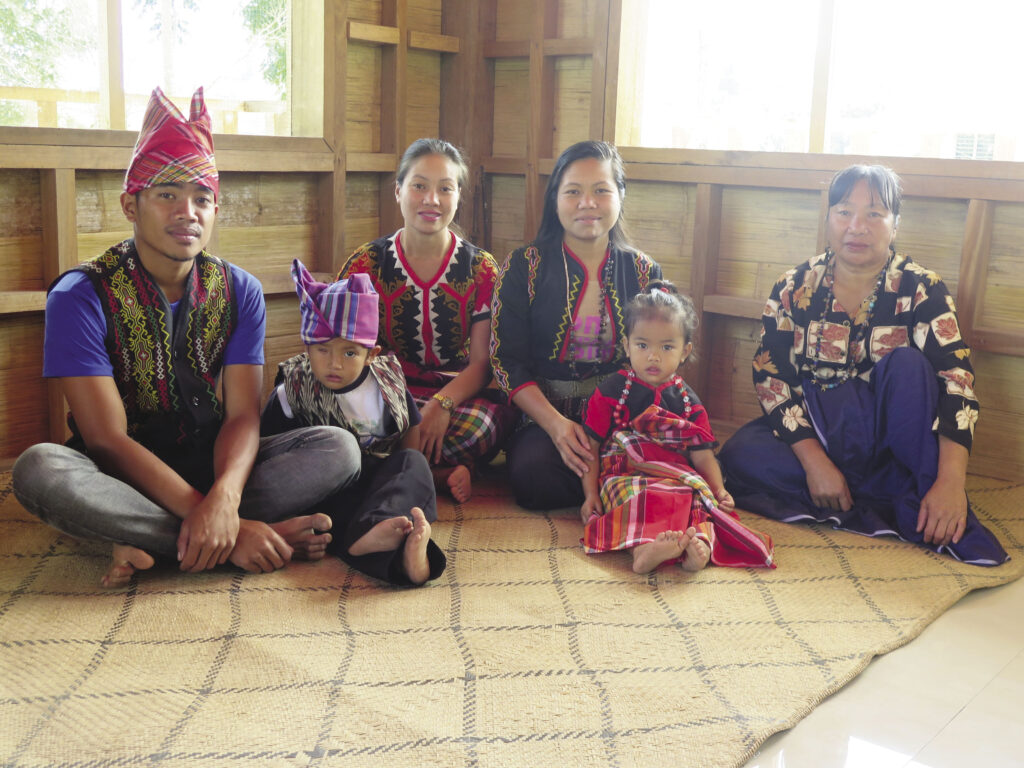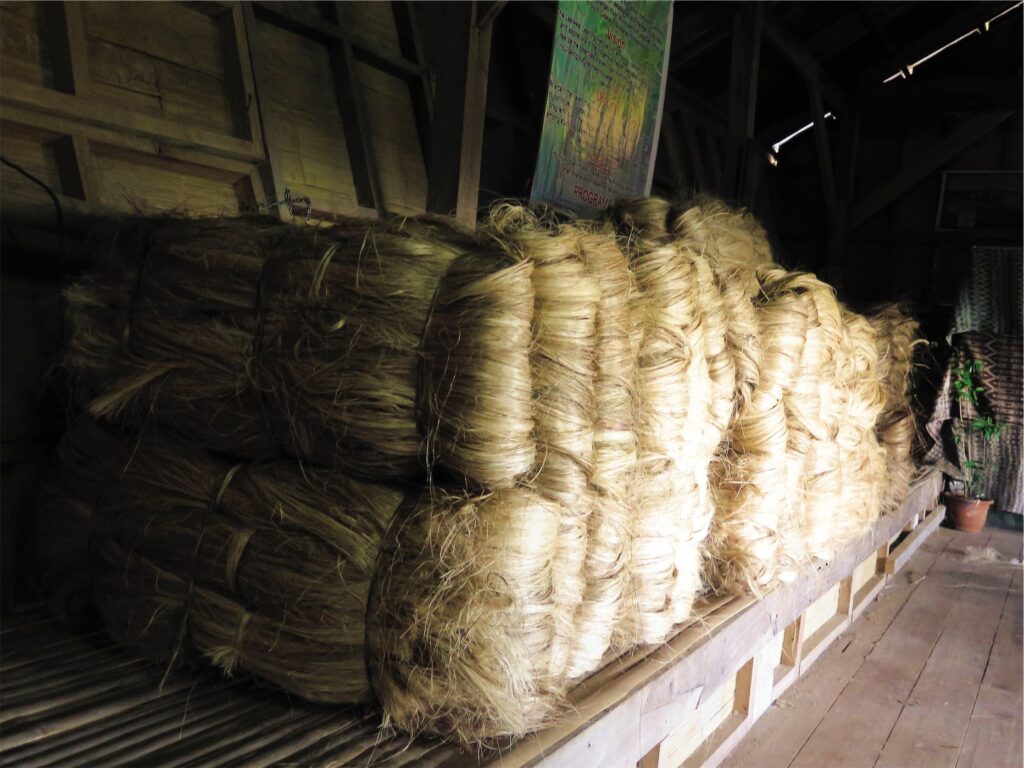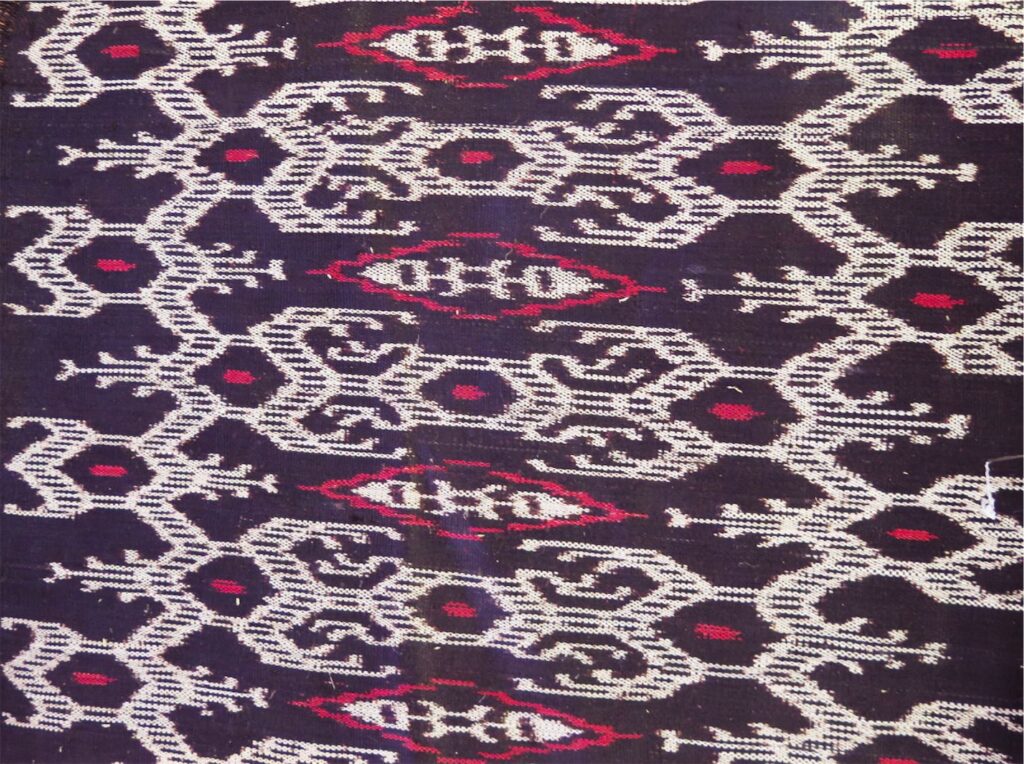
What comes out of T’boli women’s slumber is an intricately weaved T’nalak cloth stirred by dreams. Dream weavers were women who enjoyed an elevated status as traditional T’nalak cloth weavers with skills passed from one generation to another. Boi Jenita Eko, a cultural worker and the founder of Lake Sebu Indigenous Women Weavers Association, Inc. (LASIWWAI), is from a family of well-known weavers and an advocate of many things: women, the environment, and Indigenous Peoples’ culture and heritage.
True to the community’s given importance to dreams, Jenita’s grandfather Datu “Ma Amfan” or Batol Ofong, prophesized that she would be someone people would trust and depend on. This was the reason why Jenita forced to observe leadership roles and be present in mediations. Despite this, it was still difficult for Jenita to finish her AB Political Science and Bachelor of Laws at Mindanao State University, a university far from home because her father didn’t want her to pursue higher education. Her father’s reasons were concerns for her gender and ethnicity. How would a T’boli woman fare in an environment outside her home community? Rather than being deterred, however, Jenita saw this as a challenge. She became a working student and was the sole graduate out of a hundred students in her batch.
Yom tao taha plano, enget mekeb botu, which literally means “if you have big plan, you will eat stones”. This means that there is a very high possibility of failure with big plans. These were the words her father told her when she was deciding to study law. Ambition was difficult when you’re an indigenous woman, she says. But with her ambition to study law, Jenita was able to empower mothers who were emotionally bombarded from being part of a polygamous marriage and encouraged women to seek financial independence in order to contribute to their family.
Jenita’s advocacy for women’s empowerment and gender equality came from the intermingling of the theories she learned in her classes and the experiences of women in her community. Seeing first hand the dependency of wives to their husbands made her think about what would happen if women were left on their own. When she came back to the community, she was very aggressive in making the women in the community realize the importance of gender equality: “I talked to the mothers and asked what would be better and more helpful to the children. I talked to my sisters and explained how important education is until they studied without needing to be reminded.”
It was often difficult for Jenita to reconcile the customs of the T’boli alongside what she learned in her law classes. But Jenita refuses to call it discrimination, for her it is a part of a beautiful tradition that should be improved upon to further strengthen the T’boli culture.
The T’nalak Weaving enterprise can find its roots in Barangay Lamcade. This is where Jenita met Jelly Escarlote, Jenita’s partner in organizing and managing the enterprise. After the success of their garden and poultry business, Jenita and Jelly started thinking about better ways to incorporate women’s participation in an environmentally friendly way. The answer they found was through abaca.

Using more abaca would lead to the preservation of forests because of the need for large trees to grow the herbaceous plant. While Jenita saw the importance of both men and women’s participation in work, the work that was demanded of them were too physically taxing on women. The fiber was too bulky for women to carry.

This made Jenita think of more ways to involve women into work, forcing her to return to her roots: T’nalak.
From Barangay Lamkadi, Jenita headed back to Barangay Lamdalag, an area known for T’nalak Weaving. One challenge that Jenita saw was the seeming exclusivity of designs to specific clans. She decided to speak directly to Lola Langdulay, her maternal grandmother’s cousin, and Boi Diwa Ofong Tuan, her maternal grandfather’s sister, to increase the range of designs to help women weavers and to develop the area’s weaving industry.
This marked the moment Jenita finds out how unfairly treated T’nalak weavers were. On her first trip to the Tadeco (Tribe of the East), she found out that pieces were done on consignment and sold cheaply. “I was the first one to start boycotting because of unfair payment—no one will weave the T’nalak if the prices remained unjust.” Even if there are still buyers who take advantage of the weavers’ vulnerabilities and weaknesses, the LASIWWAI serves as the mediators of the weavers and buyers.
It was in 2005 when Non-Timber Forest Products (NTFP) discovered the LASIWWAI. While NTFP and LASIWWAI mainly forged a buyer-supplier relationship, LASIWWAI was occasionally brought to trainings and the ones to meet with designers from Europe.
Through Crissy Guerrero, NTFP linked LASIWWAI to Pamulaan Center for Indigenous People’s Education. The Pamulaan and Indigenous Peoples Leadership and Enterprise Development (IP LED) program has continuously supported the LASIWWAI through services like the building of a water system, establishing a living heritage center, and promoting and marketing their products.
LASIWWAI’s unique selling point is its unique T’nalak fabrics. The market in Minadanao is bursting with fabrics made of abaca but T’nalak’s designs set it apart. LASIWWAI’s fabrics are also solely made of vegetable dyes.
As a social enterprise, the organization has a sense of obligation to the environment. This is why the enterprise’s T’nalak fabric is more expensive, made obvious from the foreign linkages they have formed. The organization is currently lobbying for a Geographical Indication (GI) mark to be stamped to their product that would lead to a 20% price increase, an increase needed to support the growing enterprise. LASIWWAI is also pushing towards the protection of their traditional designs with the help of the European Union (EU) through the Trade Related Technical Assistant Project 3 (TRTA 3) under the Intellectual Property Office of the Philippines (IPOPHIL) to prepare for exports.
Since 2005, LASIWWAI has yet to experience any financial difficulties. The steady demand for exports and the local support of buyers from NTFP and Pamulaan keeps the business stable. The enterprise plans on scaling-up by moving away from a made-to-order production to having a bigger fabric reserve. They also see the need to invest in credit card facilities. When LASIWWAI set up a booth in a high-end mall, they lost potential sales amounting to 150,000 PHP because majority of the buyers were credit card users.
As an organization of 85 weavers, LASIWWAI has a simple goal: to promote IKAT weaving not only as a source of livelihood but also as part of the T’boli’s identity. Originally, the T’nalak fabric only had three traditional colors: yellow, black, and red. Through the continuous combining of dyes, new colors like green, gray, and mahogany were discovered. It almost seems like a fitting metaphor for Jenita who, like new pigments, has built upon the traditions of her community—not to impose upon the old but to adorn it, making it even more beautiful.
ABOUT LASIWWAI
LASIWWAI stands for Lake Sebu Indigenous Women Weavers Association, Inc. It was registered to the Securities and Exchange Commission on August 23, 2001. It envisions to carry on the dreams and aspirations of Indigenous Peoples through holistic education, cultural integrity, women empowerment, and sustainable livelihoods.
